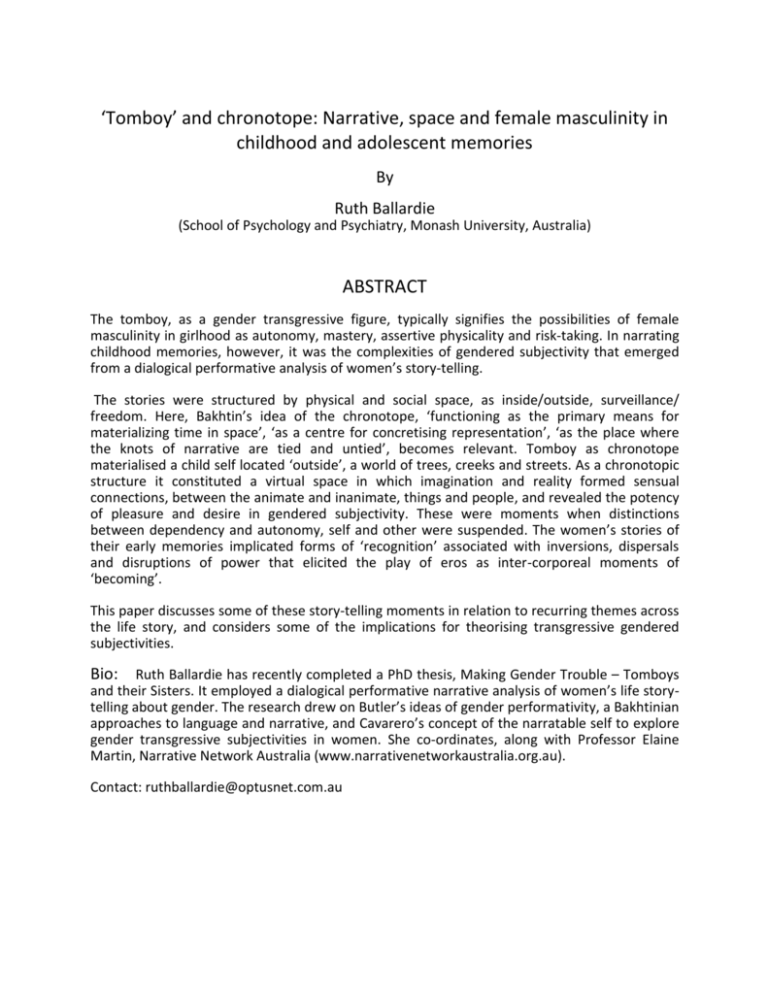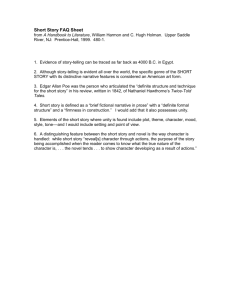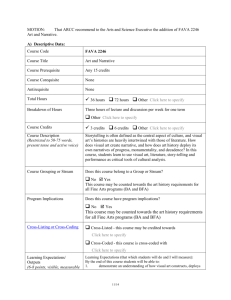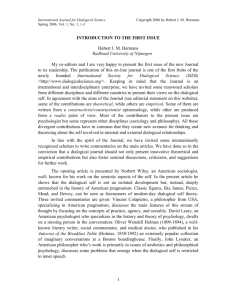`Tomboy` and chronotope: Narrative, space and female masculinity
advertisement

‘Tomboy’ and chronotope: Narrative, space and female masculinity in childhood and adolescent memories By Ruth Ballardie (School of Psychology and Psychiatry, Monash University, Australia) ABSTRACT The tomboy, as a gender transgressive figure, typically signifies the possibilities of female masculinity in girlhood as autonomy, mastery, assertive physicality and risk-taking. In narrating childhood memories, however, it was the complexities of gendered subjectivity that emerged from a dialogical performative analysis of women’s story-telling. The stories were structured by physical and social space, as inside/outside, surveillance/ freedom. Here, Bakhtin’s idea of the chronotope, ‘functioning as the primary means for materializing time in space’, ‘as a centre for concretising representation’, ‘as the place where the knots of narrative are tied and untied’, becomes relevant. Tomboy as chronotope materialised a child self located ‘outside’, a world of trees, creeks and streets. As a chronotopic structure it constituted a virtual space in which imagination and reality formed sensual connections, between the animate and inanimate, things and people, and revealed the potency of pleasure and desire in gendered subjectivity. These were moments when distinctions between dependency and autonomy, self and other were suspended. The women’s stories of their early memories implicated forms of ‘recognition’ associated with inversions, dispersals and disruptions of power that elicited the play of eros as inter-corporeal moments of ‘becoming’. This paper discusses some of these story-telling moments in relation to recurring themes across the life story, and considers some of the implications for theorising transgressive gendered subjectivities. Bio: Ruth Ballardie has recently completed a PhD thesis, Making Gender Trouble – Tomboys and their Sisters. It employed a dialogical performative narrative analysis of women’s life storytelling about gender. The research drew on Butler’s ideas of gender performativity, a Bakhtinian approaches to language and narrative, and Cavarero’s concept of the narratable self to explore gender transgressive subjectivities in women. She co-ordinates, along with Professor Elaine Martin, Narrative Network Australia (www.narrativenetworkaustralia.org.au). Contact: ruthballardie@optusnet.com.au











